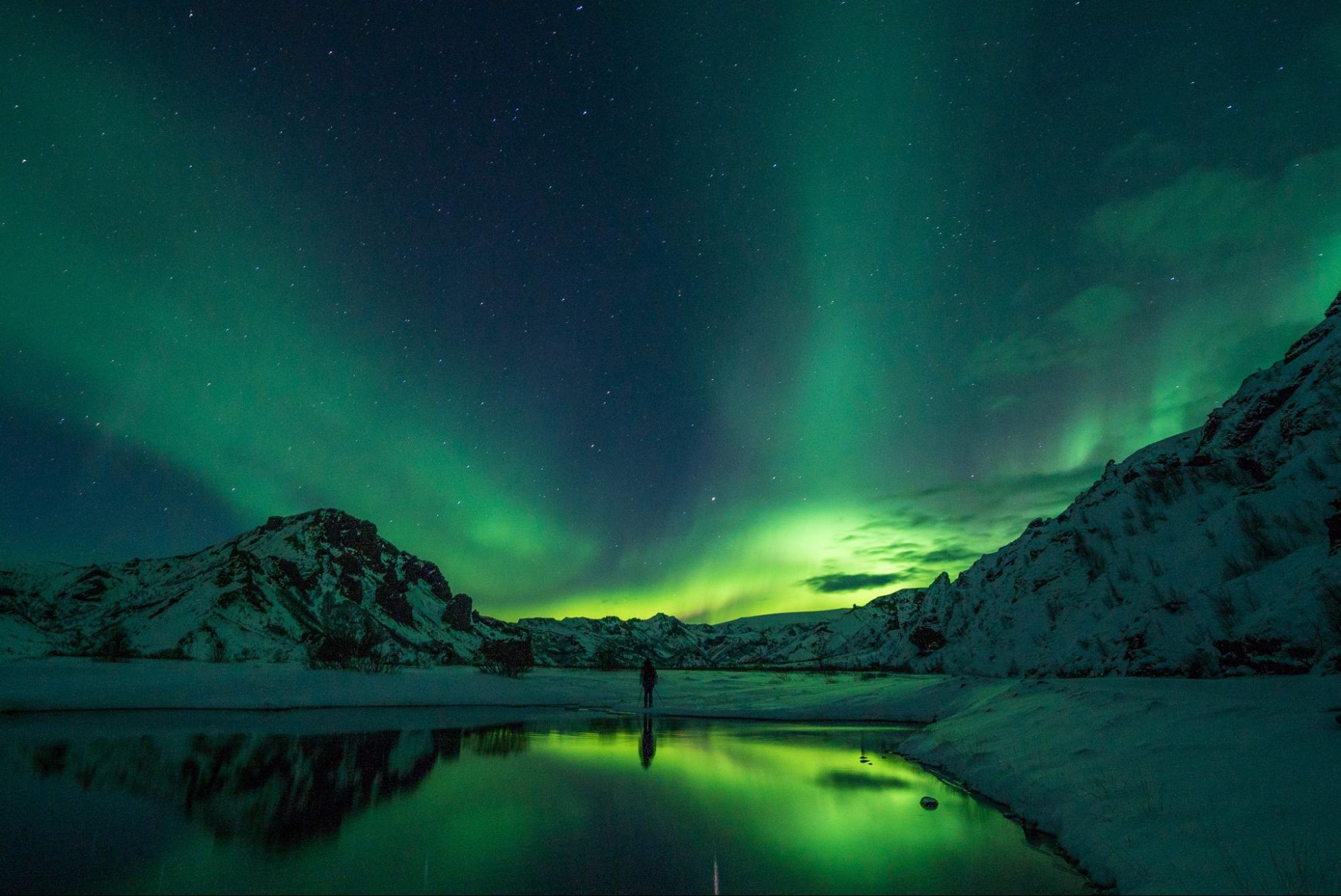
Aurora Borealis
August 14, 2024
The Aurora Borealis, often referred to as the Northern Lights, is a breathtaking natural phenomenon that captivates the hearts of millions. This mesmerising display of colours dancing across the night sky is a sight to behold and a bucket list experience for many. In this comprehensive guide, we'll delve into the science behind this celestial wonder, explore the best places to witness it, and provide essential tips for capturing its beauty through photography.
Understanding the Aurora Borealis
To truly appreciate the Aurora Borealis, it's essential to grasp the science behind it. This luminous phenomenon occurs when charged particles from the sun collide with the Earth's atmosphere. These particles, primarily electrons and protons, are carried by the solar wind and interact with gases like oxygen and nitrogen, emitting light in various colours.
The Science Behind the Lights: The Aurora Borealis is a result of a complex interplay between the sun, Earth's magnetic field, and the atmosphere. Solar flares release a burst of charged particles, which travel towards Earth. Upon reaching our planet, these particles are guided by the magnetic field to the polar regions. The collision of these particles with atmospheric gases produces the vibrant colours we see.
Colours of the Aurora: The colours of the Aurora Borealis are determined by the type of gas involved in the collision and the altitude at which the interaction occurs. Oxygen gives out green and red light, while nitrogen produces blue and purple hues. The intensity and vibrancy of the colours depend on the energy levels of the colliding particles.
Best Places to Witness the Aurora Borealis
While the Aurora Borealis is primarily visible in high-latitude regions, certain locations offer optimal viewing conditions. These areas are often referred to as the "Aurora Belt" or the "Auroral Zone."
Arctic Circle Countries: Countries within the Arctic Circle, such as Iceland, Norway, Sweden, Finland, and Greenland, are renowned for their Aurora displays. These regions offer long winter nights and clear skies, increasing the chances of witnessing this natural spectacle.
Alaska and Canada: North America also boasts excellent Aurora viewing spots, particularly in Alaska and northern Canada. Places like Fairbanks, Alaska, and Yellowknife, Canada, are popular choices for Aurora enthusiasts.
Other Northern Destinations: While less common, the Aurora Borealis can sometimes be seen in Scotland, northern Russia, and even northern parts of the United States during periods of high solar activity.
Planning Your Aurora Borealis Adventure
To maximise your chances of witnessing the Aurora Borealis, careful planning is essential. Consider the following factors:
Best Time to Visit: The Aurora Borealis is most active during the winter months when nights are longer and darker. However, the phenomenon can occur throughout the year, albeit with less frequency.
Weather Conditions: Clear skies are crucial for Aurora viewing. Check weather forecasts and choose destinations with minimal cloud cover during your planned trip.
Light Pollution: Avoid areas with significant light pollution, as it can hinder your ability to see the Aurora. Remote locations with minimal artificial light offer the best viewing experiences.
Aurora Forecasts: Several online resources and apps provide Aurora forecasts, which can help you plan your viewing activities. These forecasts indicate the likelihood of Aurora activity based on solar wind conditions.
Capturing the Aurora Borealis Through Photography
Photographing the Aurora Borealis is a challenging yet rewarding endeavour. Here are some essential tips to help you capture the magic:
Camera Equipment: A DSLR or mirrorless camera with manual settings is ideal for Aurora photography. A wide-angle lens is preferred to capture the expansive sky.
Camera Settings: Use a low ISO (around 800-1600) to reduce noise. Set a wide aperture (f/2.8 or lower) to allow more light to enter the camera. Adjust the shutter speed based on the Aurora's brightness, typically between 10 and 30 seconds.
Composition: Consider including foreground elements like trees, mountains, or bodies of water to add depth and interest to your photos. Experiment with different angles and perspectives to create unique compositions.
Post-Processing: Enhance your Aurora photos using photo editing software. Adjust exposure, contrast, and colour balance to bring out the vibrant colours of the Aurora.
Aurora Borealis: A Symbol of Wonder and Inspiration
The Aurora Borealis is more than just a stunning visual display; it's a symbol of wonder, mystery, and the power of nature. Witnessing this celestial phenomenon can evoke a sense of awe and inspiration, reminding us of the beauty and complexity of our universe.
Whether you're a seasoned traveller or a curious explorer, experiencing the Aurora Borealis should be on your bucket list. By understanding the science behind it, planning your trip carefully, and mastering the art of Aurora photography, you can create unforgettable memories that will last a lifetime.
BBV Mediatech Pvt. Ltd.
Nehru Place, Delhi, New Delhi, 110019, India
© 2024 CSEWhy. All rights reserved.